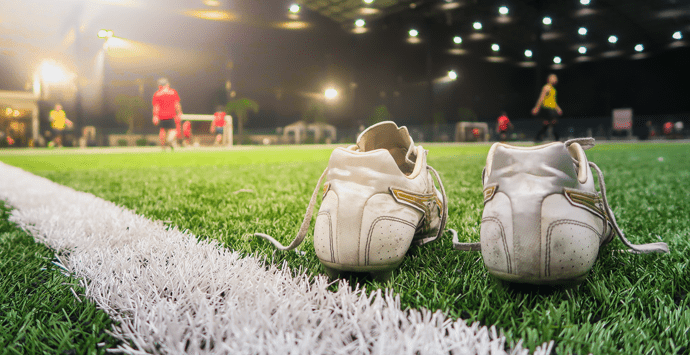Share it
In the 1950’s - football boots were designed for protection. They were solid and heavy duty. In 1968, Patrick gave George Best an endorsement, kick starting an era of sponsorship and sportswear in football.
Today all the top players have deals, with their boots designed to specifications. With modern-day boots being designed for fashion, to increase sales and sponsorship, are they making the player more susceptible to injury? and not affording them the protection they require for their feet.
In the 1950s football boots had one purpose; to protect the player from injury. The more heavy-duty the boot was the more protection you had. Heavy tackles and the physicality that was part and parcel of that era, meant that a broken leg or foot or toe had to be avoided at all costs. Players like Bobby Moore, Bobby Charlton, Alan Ball - had sponsorship deals, but it was George Best who gained a deal in 1968 with Patrick, which changed things forever. His groundbreaking endorsement package now meant apart from those who played the game, sportswear became associated with everyday fashion.

Soccer Footwear
Today - there are many top-level players who now have lucrative sponsorship deals to endorse footwear that is being marketed to individuals who are not necessarily aspiring sportspeople but who are into the latest fashion. In addition, the speed of the modern game means that players are demanding that designers produce footwear to allow for agility and rapid movements. Sports product designers are being asked by Sponsors and players to mix fashionability with the practical demands of playing football.
For players, the Achilles and the bones & ligaments under the ‘laces’ of the boots need the most protection. The Deltoid ligament which is in the arch of the foot is also in need of support and protection from heavy challenges. Luckily modern science has been able to identify a number of materials that can give durability that is also light in weight. previously - Leather was extremely durable and offered protection but was extremely heavy.

However there has been an increase in ankle and toe injuries ( ligament damage as well as fractures) over the last 20 years, is there a case to answer for modern-era footwear being designed for the consumer more so than for the player. Certainly, the modern game is being played at a much quicker pace, and the speed of tackles and force of contact is increasing all the time. Modern footwear companies, whilst trying to increase their profit margins - need to consider the needs of the players who are endorsing the footwear.
The back of the heel and ankle needs protection as well as the arch of the foot. Also if aspiring players who purchase these boots are getting a prototype and not the full custom made footwear, then they need to be made aware of the limitations of the footwear they may purchase in the stores and how if it doesn’t afford them the same level of protection this needs to be stated ( a similar issue occurred with the Adidas predator footwear being sold in the retail stores that were endorsed by David Beckham. It was shown that the boots custom-made for him were different from the ones in the store).
We do need to consider and strike a balance between marketability and commercialism and the protection of players and reducing the number of foot injuries. The primary role of football boots is to protect the player's feet, prevent injury and not sell units to consumers.